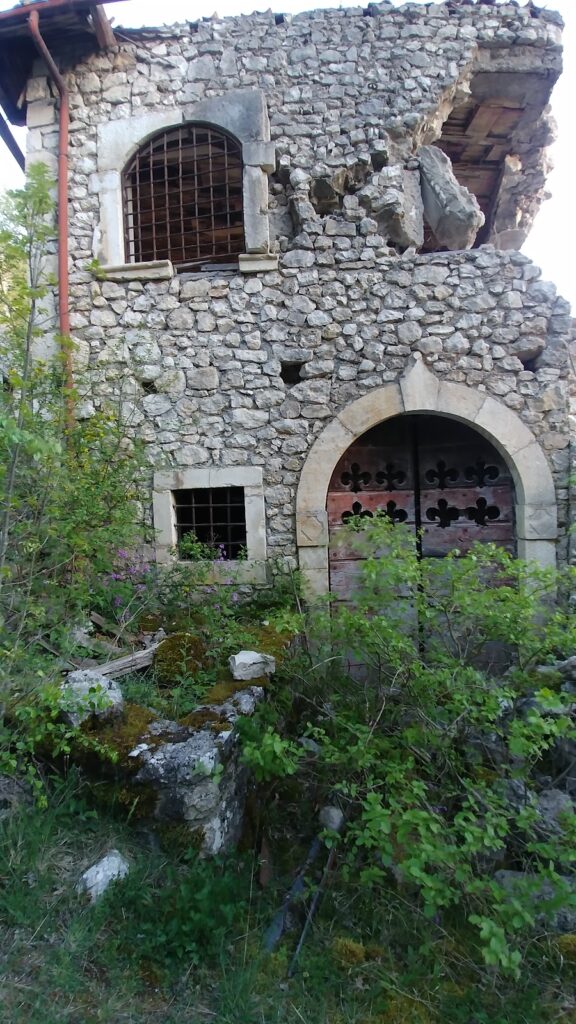Castle of Ocre: A Medieval Fortress in Italy
Visitor Information
Google Rating: 4
Popularity: Low
Google Maps: View on Google Maps
Country: Italy
Civilization: Unclassified
Remains: Military
History
The Castle of Ocre is located in the municipality of Ocre, Italy. It was originally built during the medieval period, on land historically connected to the Counts of Marsi, a noble family prominent in the region.
The earliest documentation of the castle dates to the 12th century, when it appears in the Catalogus Baronum—a register of feudal holdings—naming Todino di Collimento, a descendant of the Counts of Marsi, as its lord. By 1178, a papal bull issued by Pope Alexander III recognized the castle as part of the possessions of the Diocese of Forcona, establishing its early connections to ecclesiastical authority.
In the mid-13th century, the site was referred to as “Cassari Castro” and maintained a special status during the foundation of the nearby city of L’Aquila in 1254. Unlike many nearby fortifications that were dismantled during the city’s establishment, this castle was spared, as it belonged to Gualtiero di Ocre, the grand chancellor and the last heir of the Lords of Albe. This family had controlled the fief since the Norman conquest of southern Italy.
The political landscape shifted in 1266 when the Kingdom of Sicily came under the rule of King Charles I of Anjou. After the defeat of Manfred of Sicily, supporters of the Hohenstaufen dynasty faced reprisals; the castle was plundered by residents of L’Aquila following the city’s reconstruction after Manfred’s earlier campaigns. In response, Charles I confiscated properties loyal to Conradin of Hohenstaufen and entrusted the castle in 1269 to Morel de Saours (also known by variations of his name, such as Morello or Mauriello de Saurgio).
Ownership changed hands again in 1283 when the castle was assigned to Giovanni di Bissone. However, unrest continued as it suffered another assault by L’Aquila in 1293. One of the most serious attacks came in 1423 during the war of L’Aquila, when the mercenary leader Braccio da Montone led a severe assault on the settlement.
Following these turbulent events, the castle’s military importance waned. By the early 1500s, the site was no longer described as a fortified castle (“castrum”) but simply as a “villa,” reflecting its decline and the gradual abandonment of its defensive role. The inhabitants slowly left, marking the start of the site’s transition from a strategic fortress to a diminished rural settlement.
Remains
The Castle of Ocre is best understood as a fortified village, characterized by its extensive defensive walls enclosing not only military structures but also residential buildings and streets. Its overall plan forms an isosceles triangle with a perimeter measuring approximately 470 meters. The shortest side forms the base on the northwest, while the apex points toward the southeast, suggesting a strategic adaptation to the terrain.
Encircling the village are solid walls reinforced by seven towers that once served as strongpoints in its defense. On the northwest side, three towers are found, including two that are positioned adjacent to each other at the northern corner of the fortification. The southern apex is marked by a single tower, while the remaining three towers are distributed along the curtain walls—two along the northwest segment and one on the northeast side. This latter tower benefits from natural protection due to a steep cliff overlooking the nearby Fossa sinkhole, adding a natural form of defense.
Access to the settlement was controlled through a single entrance located near a corner tower on the western wall. This gate, dating from the 13th century, is distinguished by its pointed arch—a common medieval architectural feature—and was designed to be defended by a crossfire system, allowing defenders to cover attackers approaching the entry point from multiple angles.
At the southern tip of the fortified enclosure stood a church dedicated to San Salvatore, described historically as being located “inter castrum Ocre,” meaning within the castle of Ocre. This religious building featured a basilica plan with three naves and a single apse at the end, underlining its important role within the community. Although now in ruins, the church was still referenced in documents as late as the late 16th century.
From this church come fragments of a mid-12th-century fresco portraying a Madonna enthroned with the Child, flanked by two figures. Known as the “Madonna de Ambro,” these fresco remains are notable for their marked Byzantine stylistic influence. Today, the fragments are preserved in the National Museum of Abruzzo in L’Aquila, serving as a tangible link to the artistic heritage connected to the castle’s ecclesiastical past.










